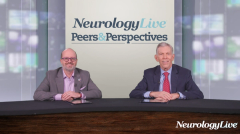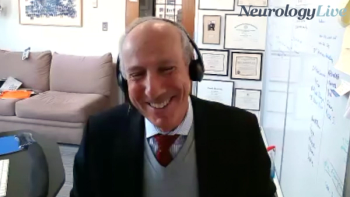
Emerging Disease-Modifying Therapies in Dravet Syndrome
Panelists discuss how promising disease-modifying therapies including antisense oligonucleotide and viral vector treatments are currently in clinical trials and target the underlying SCN1A gene defect, rather than just treating seizure symptoms, showing encouraging results in seizure reduction and nonseizure outcomes such as language development, though these therapies will likely complement rather than replace existing medications when they become available in several years.
Episodes in this series

Disease-Modifying Therapy Approach
Unlike traditional antiseizure medications that address symptoms, disease-modifying therapies target the underlying genetic defect in Dravet syndrome to potentially improve the condition comprehensively. Two promising approaches are currently in clinical trials: antisense oligonucleotide therapy and viral vector therapy. Both strategies aim to enhance production of healthy SCN1A protein by capitalizing on the fact that patients with Dravet syndromehave one mutated gene copy and one healthy copy. By increasing expression from the healthy gene, these therapies could potentially compensate for the deficient protein production caused by the variant gene, addressing the root cause rather than just seizure symptoms.
Clinical Trial Results and Timeline
Early clinical trial data show encouraging results for both therapeutic approaches, with significant seizure reduction demonstrated in patients. The antisense oligonucleotide therapy has shown particularly promising outcomes beyond seizure control, including improvements in nonseizure domains such as expressive language and communication skills. This broader impact suggests true disease modification rather than symptomatic treatment alone. While these developments are exciting, widespread availability remains several years away, though progress is advancing with one therapy recently entering phase 3 trials, representing a critical milestone toward regulatory approval.
Integration With Current Treatment Paradigms
Despite the promise of disease-modifying therapies, they are unlikely to completely replace existing medications. Clinical experience suggests that while patients achieve higher levels of seizure control than previously possible with these novel treatments, combination therapy with traditional antiseizure medications remains necessary for optimal outcomes. Rather than eliminating current therapeutic approaches, disease-modifying therapies will likely enhance existing care by allowing medication regimen simplification while achieving superior seizure control. These represent significant advances toward the ultimate goal of cure, though complete elimination of all medications for all patients remains unlikely in the near term.
Newsletter
Keep your finger on the pulse of neurology—subscribe to NeurologyLive for expert interviews, new data, and breakthrough treatment updates.




































